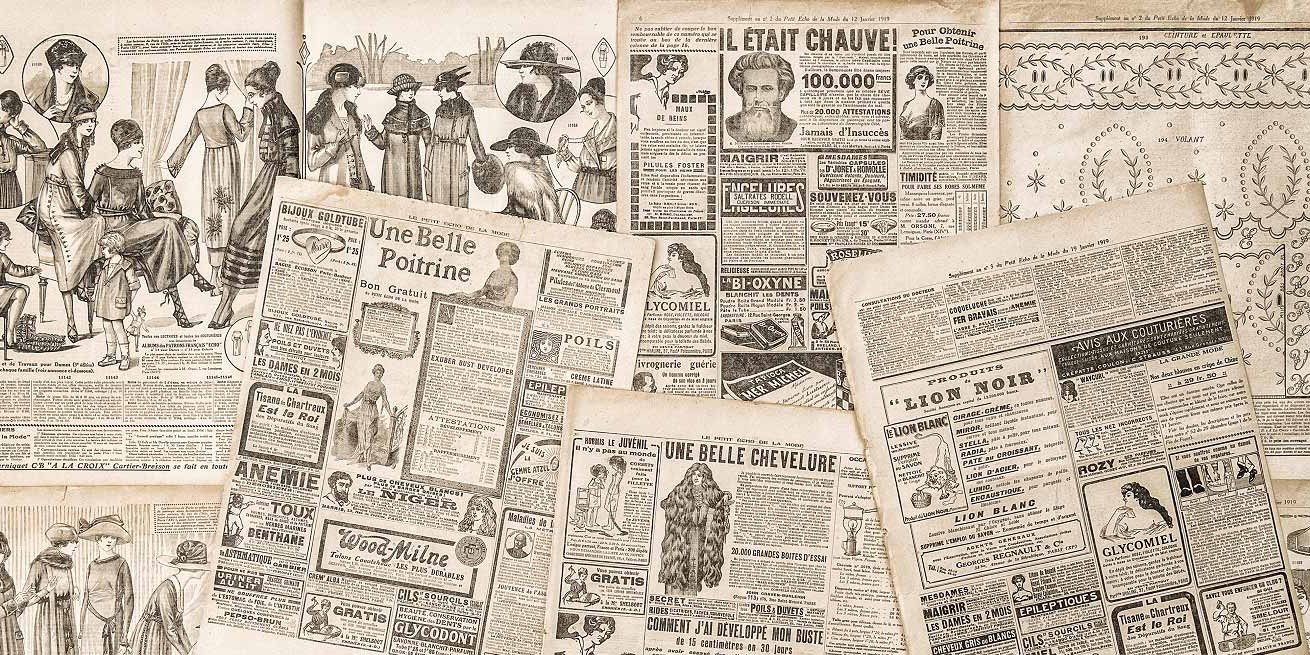In the beginning was the word… In the meantime, people discovered fire, started gathering fruits, nuts, and grasses, learned to hunt protein-rich animals, and created settlements near water to catch fish.
Soon after that, the agricultural revolution happened and settlements turned into towns and cities where technological advancements expanded commerce, promoted competition, and gave birth to advertising.
That’s how the civilized world emerged.
This world keeps evolving, and advertising is evolving along with it. Nowadays, ads chase people everywhere, gaining as much power over human minds as fire, food, and technology.
Let’s go back in time, retrace the evolution of advertising, and try to figure out how it happened.
The Complete History of Advertising
If you take a look at any advertisement in the past and present, you’ll see that ads have always been the same. The form is the only thing that has changed throughout the centuries.
The Antique Period — Carving and Writing
No one knows exactly when businesses began using advertising to distinguish themselves. What makes sense and what we know for sure is that early forms of advertising were verbal. In ancient markets, sellers shouted in order to advertise their products and services.
After a while, stall owners realized that it’s more efficient to be quiet and nail down carved signs or flags that tell much more than any shouts and words. And things got rolling…
The World’s First Written Advertising in Ancient Egypt
According to the Story of Advertising by James Playsted Wood, the first known written ad in the history of advertising was found by archeologists in the ruins of Thebes, known to the ancient Egyptians as Waset.

It was the papyrus created in 3000 BC on behalf of a slaveholder who was trying to find one of his slaves. Here’s the full transcript translation made by James Playsted Wood:
The man-slave, Shem, having run away from his good master, Hapu the Weaver, all good citizens of Thebes are enjoyed to help return him. He is a Hittite, 5' 2" tall, of ruddy complexion and brown eyes. For news of his whereabouts half a gold coin is offered. And for his return to the shop of Hapu the Weaver, where the best cloth is woven to your desires, a whole gold coin is offered.
Yes, in pharaonic times, it was totally okay to simultaneously ask for help in searching for a slave and promote branded clothing. You can see for yourself by visiting the British Museum in London.
And if you’re worried about the fate of Shem, you don’t have to be. Trip and Travel Blog reports he was never found according to another papyrus of Hapu, who probably had no idea that he had created one of the most prominent examples of advertising through the ages.
Commercial Messages Painted by Professionals in Ancient Rome
The eruption of mount Vesuvius almost destroyed the ancient Roman city of Pompeii but saved evidence of multiple messages written on the city walls in the form of graffiti, which was a pretty popular form of expression in Ancient Rome.
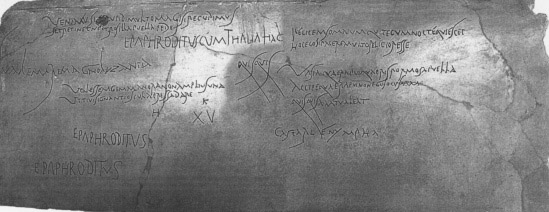
Here’s what Evan T. Sage wrote in the May 6, 1916 edition of Classical Weekly:
I come now to the discussion of the type that is best represented, the billboard advertising. My evidence is practically all from Pompeii. More than six thousand inscriptions have so far been discovered there, and the number increases with every excavation.
Sage notes that messages include alphabets scratched by passing schoolboys, quotes and original verses, names of visitors to public places, laundry lists, and more.
Before the disaster, Pompeii citizens lived in whitewashed buildings that lacked ground-level windows. This construction technique avoided burglary and gave a tremendously large space for texts advertising politics, gladiator games, real estate, and other topics.
More than that, those in power hired professional graffiti artists who were able to make large and grammatically correct commercial and political ads to order.
The Middle Ages — The Printing Revolution
In the beginning of the Middle Ages, advertising hardly differed from ads in antiquity. Nothing affected the development of advertising over the years, or even over the centuries. While shouters shouted, sellers came up with original signs and flags to attract the attention of potential buyers.
However, the rapid growth of the world’s population and the human passion for exploration made capitalism ascendant. All around the world, consumers became more educated and business owners started to make more money.
In the second volume of his trilogy The Wheels of Commerce, French historian Fernand Braudel describes a dramatic transformation of economic life in London, Amsterdam, Venice, Lyons, Nuremberg, and many other cities: Shops became a new economic force, a specialized urban real estate market emerged, credit gained importance.
The World’s First Printed Advertising Medium and Trademarks in China
In the Chinese Tang Dynasty (618–907 AD), salespeople in the market district of the capital city Chang-an were required to sign a trademark on their products. In this way, authorities identified the producer, monitored product quality, and controlled advertising.
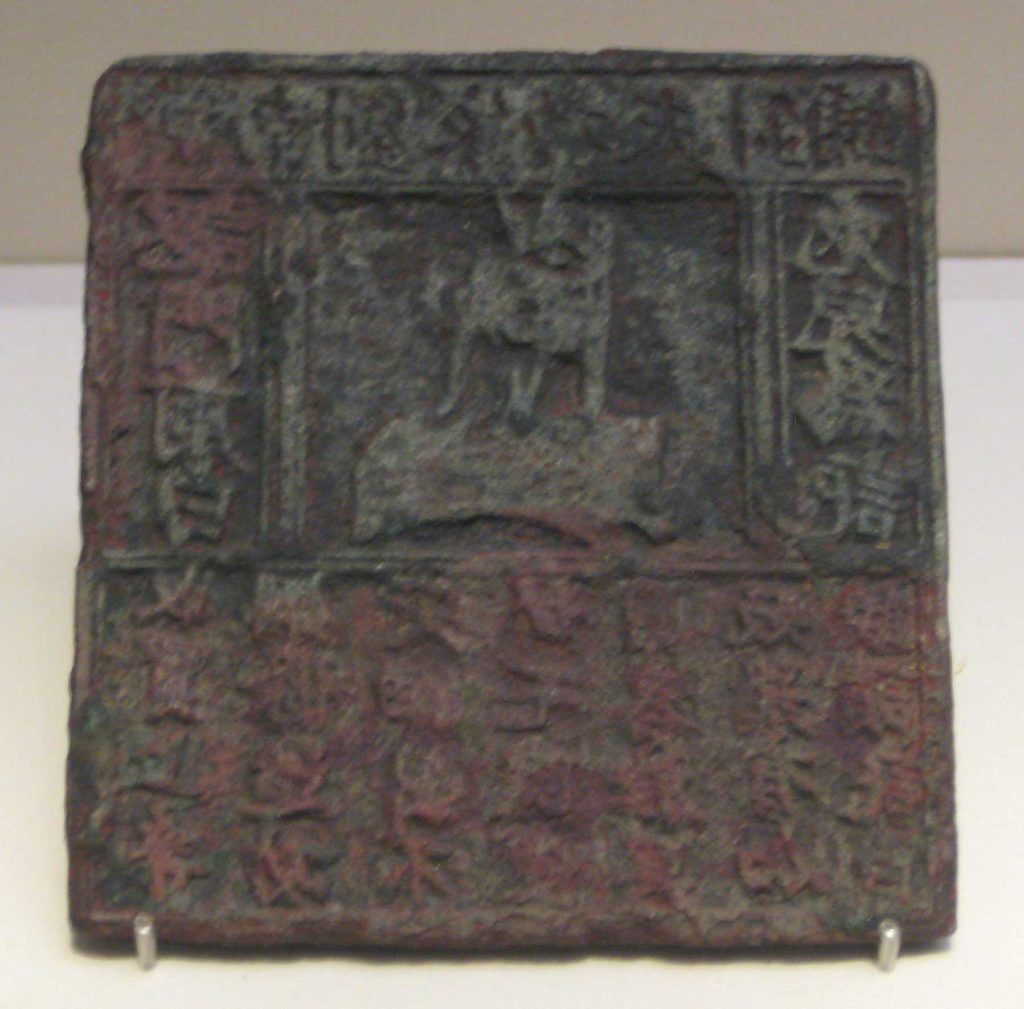
Another piece of spectacular evidence in the history of advertising comes in the form of a copper printing plate used to produce promotional posters during the Northern Song period (960–1127 AD).
Hong Liu, in his book Chinese Business: Landscapes and Strategies, writes:
The earliest-identified example of an outdoor advertising medium is a printed poster from the Northern Song period, consisting of a square sheet of paper with a logo in the form of a white rabbit in the centre. Written above this is: “Quality Needle Shop of Jinan Liu’s Family” and below: “We buy high quality steel rods and make quality fine needles, to be ready for use at home in no time.” On either side are the slogans: “Identify the white rabbit as our mark” and “Please remember ‘white rabbit’.”
It appears that people in ancient China were the first who followed the white rabbit.
Gutenberg’s Moveable Type and Spam in Handwritten Books
Four centuries after Jinan Liu’s family printed their needle posters, Gutenberg started the printing revolution in Europe by inventing the mechanical movable-type printing press in 1439.
Within the next forty years, Gutenberg’s presses were set up in multiple cities all around Europe including in Germany, England, France, Spain, and Portugal. According to Wikipedia, the number of printed books in Europe grew from a few million to nearly one million copies within the next four centuries.

It’s worth noting that commercial book production was widespread several centuries before the beginning of the printing revolution. These books were written by artisans and contained spam and other marketing tricks.
The Industrial Period — Mass Media and Advertising Agencies
The next stage in the history of advertising and its timeline was the industrial revolution and the advent of the press in the 17th century. Along with books, people all around Europe got an opportunity to read newspapers, gazettes, magazines, and journals. Retailers and manufacturers began mass production of flyers and trade cards.
The world’s first newspaper, Relation aller Fürnemmen und gedenckwürdigen Historien, was issued in 1605 in Strasbourg by Johann Carolus.
The world’s first magazine, Erbauliche Monaths Unterredungen, appeared in 1663 and was issued for five years as a philosophy periodical. In 1731, the first issue of the Gentleman’s Magazine, the world’s first general-interest magazine, was published in London.
In 1665, the Oxford Gazette (later the London Gazette) was published in London as one of the official journals of the British government records.

On April 24, 1704, John Campbell started to distribute the Boston News-Letter, the first continuously issued newspaper in the United States.
On May 8, 1704, one of the first newspaper ads appeared in the Boston News-Letter. It was a real estate advertisement selling a plantation on Oyster Bay, Long island.
In 1739, the Scots Magazine, the world’s oldest magazine still in publication, was first published.
The first advertising agency was founded by William Taylor in 1786 and existed till the late 1980s as White Bull Holmes, a well-known recruitment-advertising agency in London.
On June 16, 1836, Émile de Girardin, a French journalist, politician, and publisher, founded La Presse, the first newspaper that managed to reduce its price to the reader by subsidizing the subscription price through advertising.
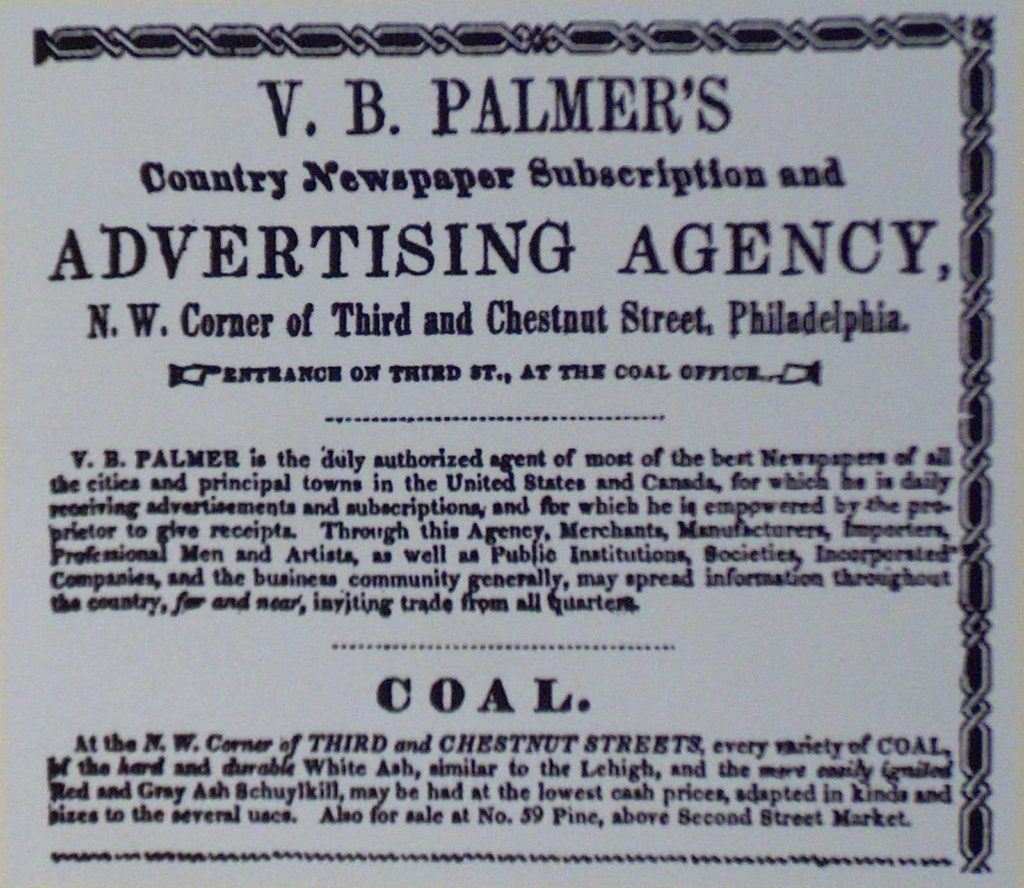
In 1841, the first advertising agency in the United States was founded by Robert Palmer, the son of a newspaper publisher and a coal businessman who considered himself an advertising agent. Palmer’s major contribution was the formation of the newspaper advertising market by setting aside a large amount of space for ads and reselling it at higher rates to professional advertisers whose competition got fiercer year by year.
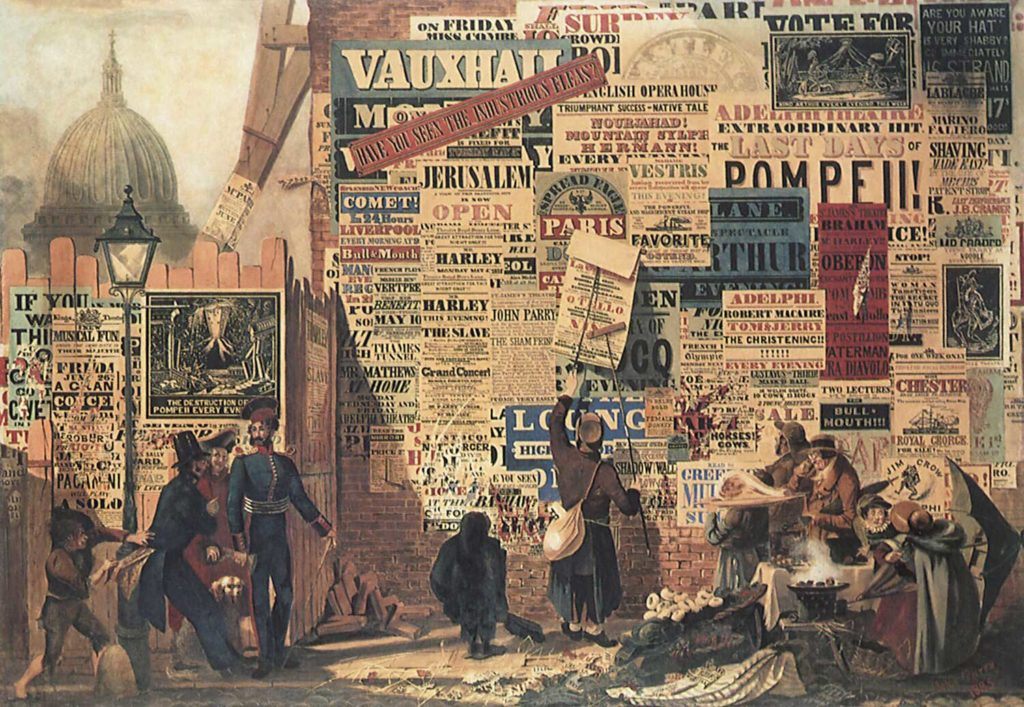
A John Orlando Parry watercolor created in 1883 confers the atmosphere of the age.
The Machine Period — Radio and Television
In the beginning of the 20th century, advertising was everywhere. And advertising agencies were fully responsible for its content. On June 4, 1917, five regional industry groups and 111 charter members formed the American Association of Advertising Agencies, now called the 4A’s.
The World’s First Radio Advertising
At the time when advertising was shaping into an industry worth millions of dollars, print advertising was about to face a new rival: the radio waves.
The first paid radio advertising was aired on WEAF (WFAN) in New York on August 28, 1922. Since direct selling was prohibited, the ad was a 10-minute broadcast on the subject of a carefree life in the suburbs at the Hawthorne Court Apartments in Jackson Heights, Queens. The Queensboro Corporation paid WEAF $50 to run it.
In the 1920s, commercial radio stations became the major advertising medium for national advertisers, small businesses, and big companies.
The World’s First Television Advertising
After World War II, television became the major source for promoting products and services to the masses.
The first television advertisement was aired on July 1, 1941, and lasted nearly ten seconds. Produced by the Biow Company, the video promoted a Bulova Watch. The message was “America runs on Bulova time.”
The Golden Age of Advertising
The period from the 1960s to 1980s is considered the golden age in the history of advertising. During this period, industry legends such as William Bernbach, David Ogilvy, and Mary Wells Lawrence revolutionized the industry and improved standards.
The best ideas come as jokes. Make your thinking as funny as possible. — David Ogilvy
Professionals started thinking out big ideas, relying on psychology and big data, and allocating big budgets. In the 1960s, advertising transformed into a real science with teams of psychologists, focus groups, and researchers.
The Digital Period — Internet Technologies and Social Media
The synergy of economics and science in advertising that began in the 1980s reached its peak in the 1990s with the emergence of the fourth major advertising medium: the World Wide Web.
In the history of online advertising, the timeline includes numerous events.
The World’s First Digital Banner Advertising
The evolution of digital advertising began in October 1994 when HotWired launched the first digital banner ads from 12 brands including Volvo, AT&T, and IBM.

Above, you can see one of the banners that participated in the HotWired ad campaign. If you want to know more about the first banner ads launched online, check out this website.
HotWired left one of the best examples of early internet advertising. Back then, website publishers sold ad space on their websites to ad exchange networks such as Microsoft, Nexus, and OpenX and changed banners by hand by editing a website’s HTML code.
From Static Ads to Dynamic Online Advertising
In 1996, DoubleClick was founded. DoubleClick was the first online advertising platform to run targeted ad campaigns as we know them today. In 2000, Google developed Google AdWords (now Google Ads), an advertising platform allowing businesses to target ads based on people’s Google search history and browsing preferences. In 2007, Google acquired DoubleClick for $3.1 billion.
The Advent of Social Media Advertising
With the introduction of Facebook Ads in 2007, the number of targeting possibilities that advertising platforms could offer to businesses increased. That’s how the advertising war between Google and Facebook and the development of digital territories started. These companies are still expanding their advertising networks today.
In 2005, native Gmail ads arrived in Google AdWords for all advertisers.
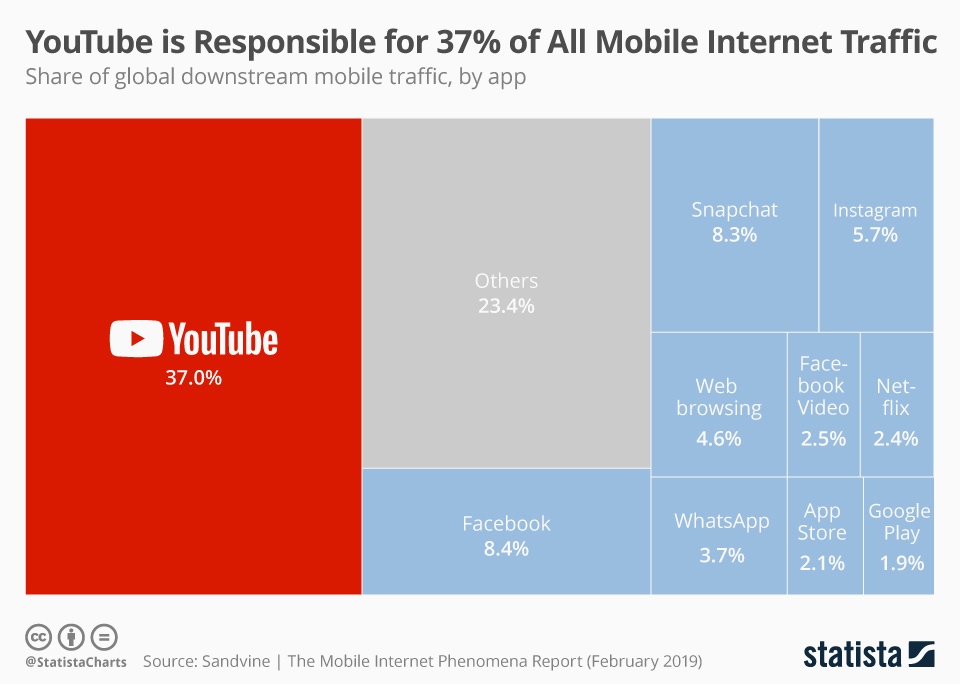
In 2006, Google acquired YouTube for almost $1.7 billion. Now YouTube is one of the world’s leading advertising platforms and is responsible for 37% of the world’s mobile traffic.
In 2009, YouTube ads were launched in seven formats.
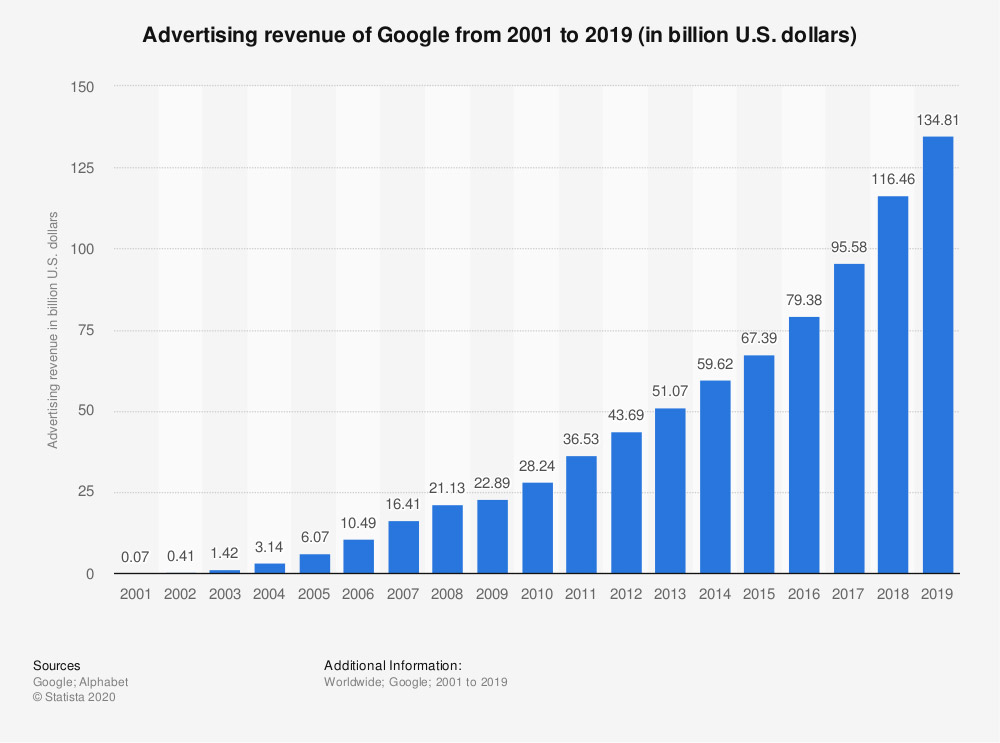
Google advertising revenue grew from $70 million in 2001 to more than $134 billion in 2019. Advertising is estimated to account for nearly 71% of Google’s total revenue.
In 2012, Facebook bought Instagram for $1 billion 18 months after its launch.
In 2013, Instagram ads were launched.
In 2014, Facebook bought Oculus VR for immersive virtual reality (VR) gaming, social networking, and, perhaps, advertising. That same year, WhatsApp joined the world’s top social network for $22 billion and Facebook Audience Network was introduced.
In 2017, Facebook Messenger ads went global and Instagram shopping was introduced.
In 2020, Facebook introduced Facebook Shops.
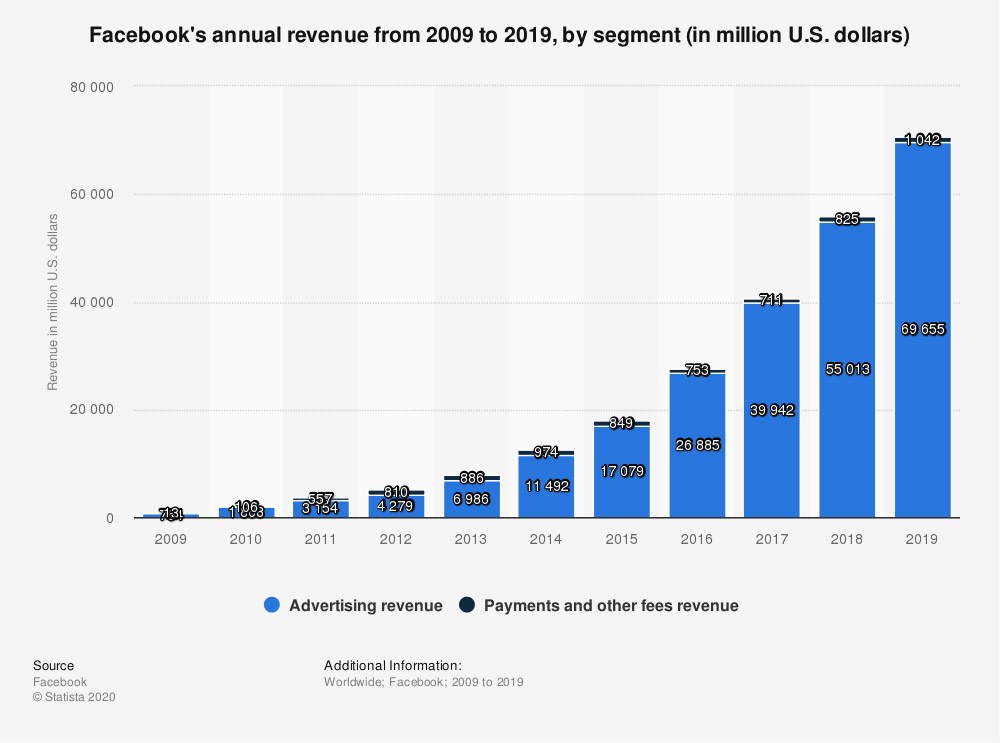
Facebook advertising revenue increased from more than $700 million in 2009 to nearly $70 billion in 2019. Payments and other fees collected by Facebook amounted to only $1 billion in 2019 — about 2% of the company’s global revenue.
Enter the New Era of Advertising with Artificial Intelligence
The next reasonable question to ask about the history of advertising is What’s next?
According to Statista, the United States will for the first time make up more than two-thirds of worldwide advertising industry spending in 2023. Global ad spending is expected to reach $590 billion in 2020.
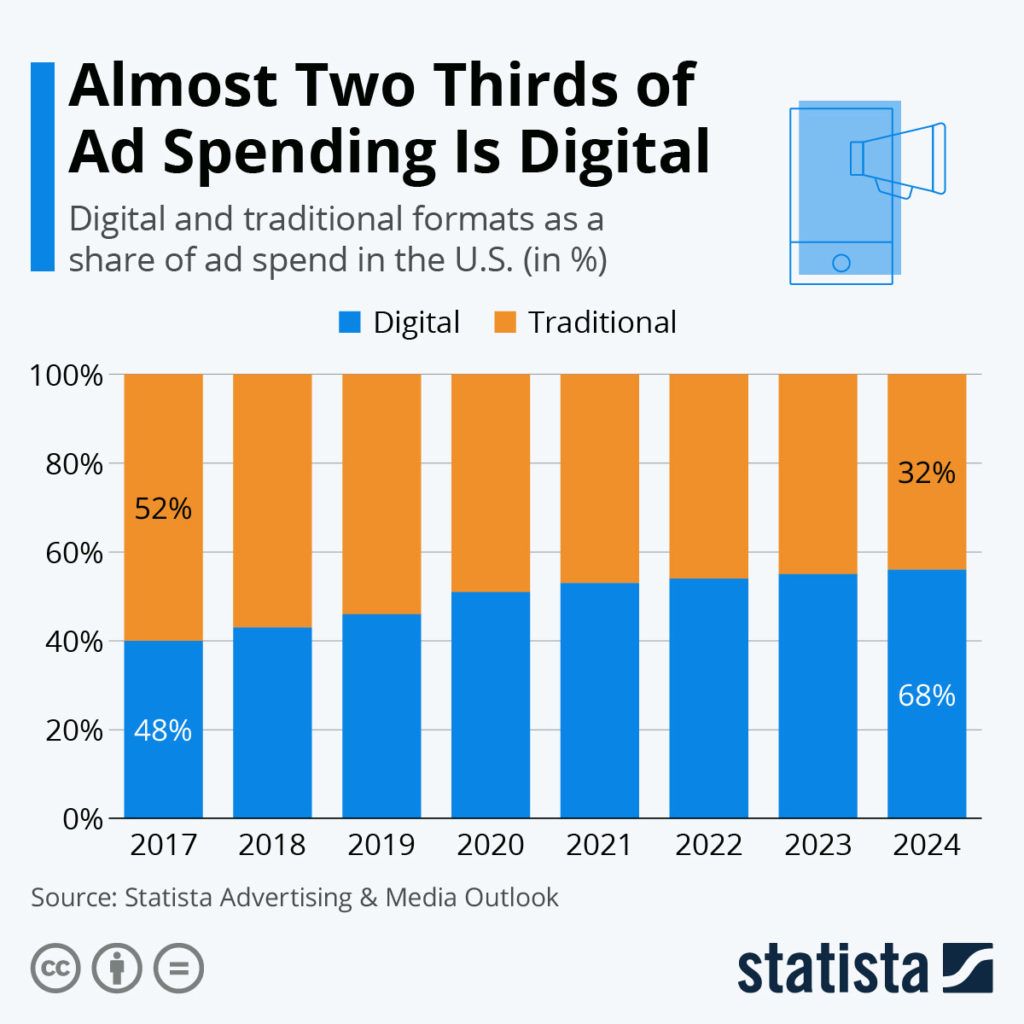
Traditional ways of producing advertising are becoming increasingly unattractive. By 2021, more than 50% of global advertising spending is projected to be spent on internet ads followed by television ads (27%), outdoor ads (7%), newspaper ads (6%), radio ads (5%), magazine ads (3%), and ads in cinemas (1%) according to Statista.
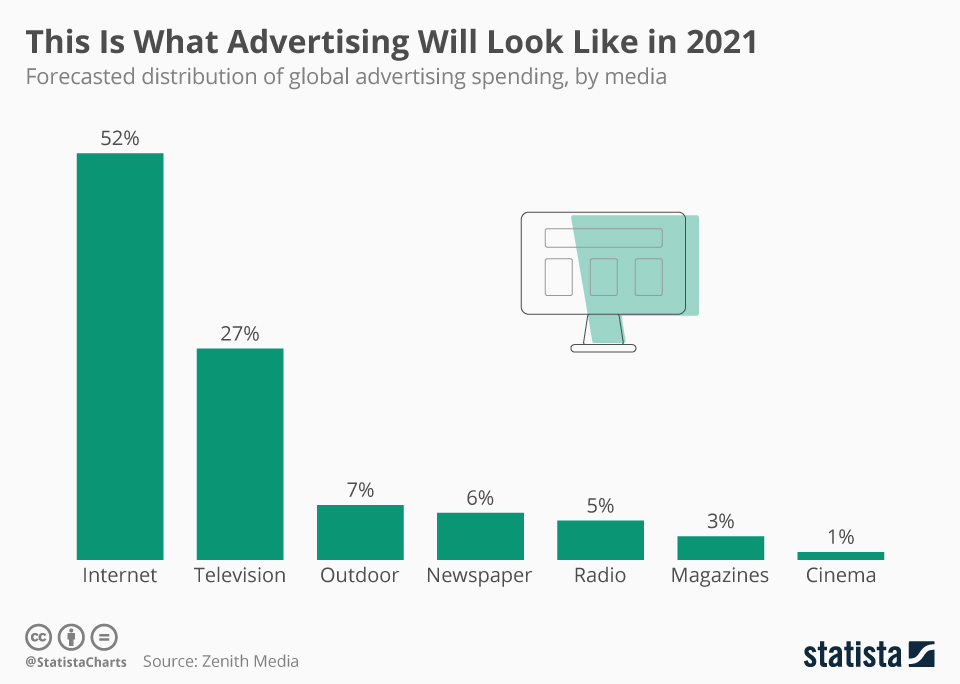
Technology is the answer. How long will the digital period last? That’s the most fascinating question in the history of advertising.
Thank you for checking out our timeline of the history of advertising. Don’t be shy to test the Softcube AI service to produce high-quality video ads in a few clicks, and take care.
